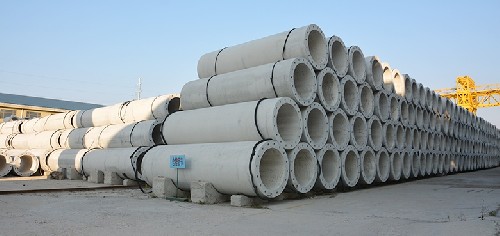
For the prevention and management of security incidents, in addition to solving the above-mentioned situation one by one, as a security management personnel, it is necessary to continuously learn from the past lessons, sum up experience, and pay more attention to the safety work in time, and promptly eliminate the security risks and eliminate them as soon as possible. Based on my years of experience and communication with relevant industry safety management personnel, I now share the following points with the relevant safety management leaders in the same industry:
1. Establish a part-time security administrator to establish operational procedures for safe production management. Although the national safety production law requires a full-time safety manager (such as a safety officer), according to the survey, the pipe pile industry that can actually set up a full-time security officer is almost zero, because everyone thinks that it is unnecessary to have a dedicated person to manage the safety. There are safety directors who are only responsible for part-time work, and there is very little time devoted to safety management. Since everyone has acquiesced in this mode of operation, I do not advocate speciality here, that is, in addition to establishing safety directors according to laws and regulations. In addition, there is no need for the safety officer to do only safe work and not do anything else. However, I strongly recommend that the security officer (or other security administrator) should invest more in security work. Because the safety officer is systematically studying and has obtained the safety management qualification certificate issued by the state, it is the person who fully understands the safety regulations and safety management methods of the enterprise*, and must contact the pipe pile enterprise to actually extract the regulations related to the enterprise. Important provisions are written into the Safety Management Regulations for implementation. For example, in accordance with the regulations, do a good job in the three-level safety training and post-security training for new employees, and keep a good training record; for some high-risk employees and their management personnel must sign the "Safety Responsibility Letter"; for some major accidents Hazardous equipment and facilities or other places where major safety accidents may occur should be formulated as "Emergency Safety Accident Emergency Plan"; organize regular safety inspections. In addition, it is recommended to set up two safety part-time administrators to work in the workshop, so that the unsafe operation methods of the employees in the production process can be found in time and stopped in time. The two people can simultaneously give the "process quality supervision" and "safe production supervision" position, referred to as "quality security staff". The two people who set up such a position can grasp the process safety, so that many hidden dangers can be eliminated in time. Eliminate many people from accidents.
2. For the pre-employment training of new employees, you can make slides, express the equipment and other accident sources that have occurred in the past (the above-mentioned key accident sources are part of them), and the injured cases are expressed in pictures and texts. The security administrators explain, so the training is easier and more effective, and the vivid and vivid pictures make the new employees unforgettable.
3. In addition to doing pre-employment training for new employees, employees on the job are also not educated. In a certain period of time, we should report on the safety accidents of the safety accidents in the workshops of each workshop in the near future and the case-based education conferences based on the unsafe factors that the on-site managers usually find. Of course, it is not necessary to say security at a special safety meeting. In fact, meetings before and after the class can also be said. The purpose of the Safety Education Conference* is to let employees know the safety incidents and their causes in the recent workshops, to correct the unsafe operation methods of employees, to instill safety awareness into the hearts of employees, and to let employees know the importance of safety. Pay attention to safety.
4. List safety inspection items and form forms, regularly organize relevant safety inspections of production management personnel, and rectify the time limit for discovering safety hazards. If there is no rectification or rectification after the expiration, it will be included in the management personnel evaluation deduction points.
5. According to the accident rate of different workshops in previous years, the frequency and quantity indicators of different workshop safety accidents are formulated as a clause in the monthly performance evaluation of relevant management personnel.
6. Print eye-catching safety slogans in the process or environment where the production workshop is prone to safety accidents. In the form of posting or writing directly on the wall, people who work there can play a reminder during busy hours.
7. Set up workshop/class collective quarterly safety production reward and punishment regulations, enhance the collective sense of responsibility of the team members, let them supervise each other in the work, remind each other and help, truly "safe production, everyone is responsible".
8. For large factories, there are usually multiple production workshops or production lines. If a safety accident occurs in a certain workshop or a certain production line, other workshops or production lines are not known. At this time, it is necessary to notify other workshops or production lines in time to attract the attention of other workshop employees and avoid similar accidents. The content of the notification usually includes the time, place, process, consequences, causes, treatment results and requirements.
